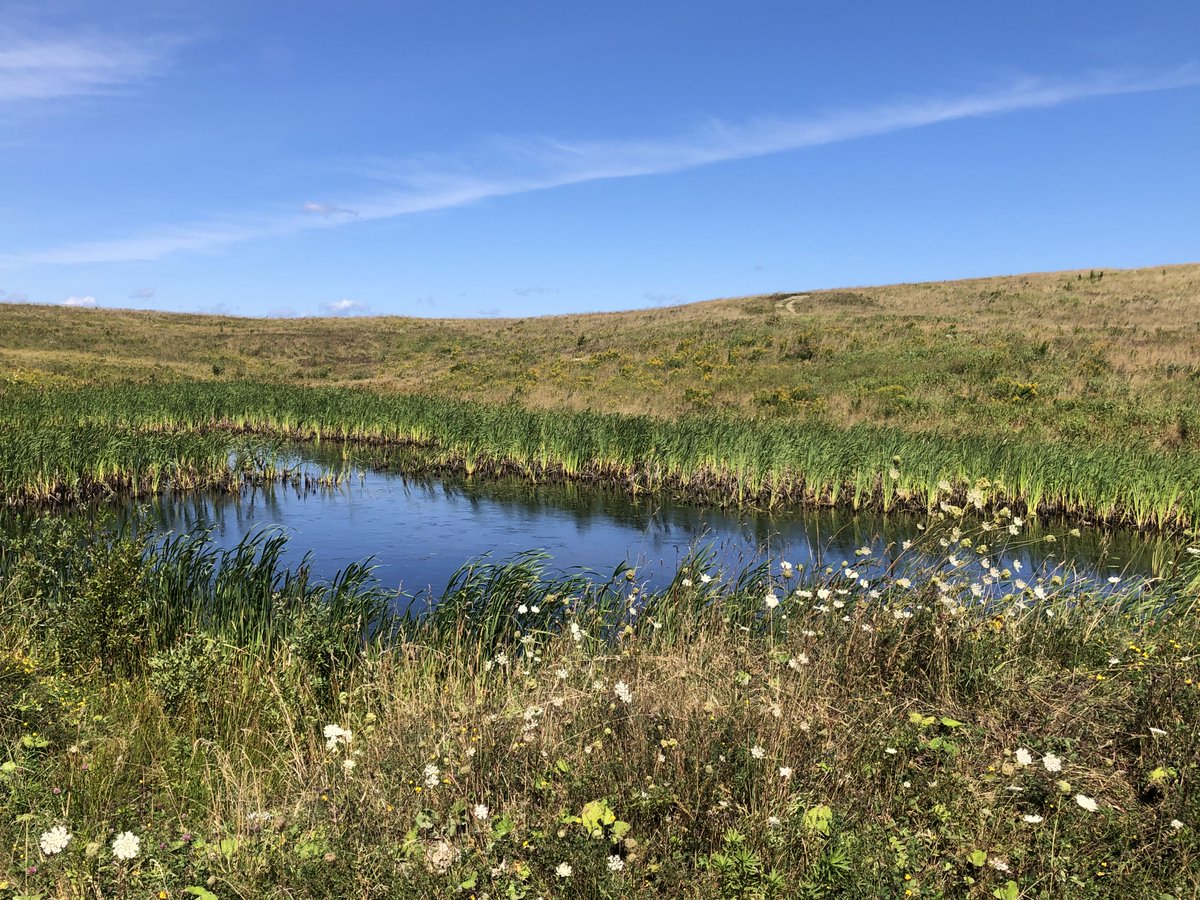We love getting questions about mining, minerals and geology! We were asked about sinkholes and whether they are a risk when walking in the woods.
#nspoli #cbpoli #novascotia #capebreton @oxfordsinkhole

#nspoli #cbpoli #novascotia #capebreton @oxfordsinkhole


The short answer is yes, sinkholes are real but no, they are not a major risk and should not prevent you from enjoying outdoor activities.
Most natural sinkholes are caused by groundwater naturally eroding rocks like gypsum, salt and limestone which are water-soluble.
#nspoli
Most natural sinkholes are caused by groundwater naturally eroding rocks like gypsum, salt and limestone which are water-soluble.
#nspoli

The water erodes the rock, leaving an underground cavern. Eventually, the weight of the rock and earth above the cavern causes the sinkhole to form. Sinkholes can form either gradually (i.e. a small depression appears and perhaps grows larger over time) or by sudden collapse. 

The most well-known sinkhole in Nova Scotia these days is the #Oxford sinkhole which suddenly formed in 2018, through the process described above – #gypsum was likely eroded by groundwater and the ground above eventually collapsed into the cavern left behind.
#nspoli #cbpoli
#nspoli #cbpoli

Most sinkholes in Nova Scotia are the result of eroded gypsum because Nova Scotia has such vast #gypsum deposits.
#nspoli #cbpoli #novascotia #capebreton
#nspoli #cbpoli #novascotia #capebreton

Sinkholes can also be caused by human activities like underground mining which, if not properly reclaimed, can also leave underground openings that may not support the weight of earth above it. This is a legacy issue from historical mining, mainly from old coal mines.
#nspoli
#nspoli

Modern reclamation methods prevent this from happening and “reclamation mining” projects, like the #PointAconi and #Stellarton coal mines, fix these legacy issues by mining out the remaining coal and properly reclaiming the land in the process.
#nspoli #cbpoli #novascotia

#nspoli #cbpoli #novascotia


Old tunnels and caverns are filled in and the ground is stabilized so it can be safely used. (Learn about the #PointAconi reclamation mine at facebook.com/MiningNS/posts… and the #Stellarton mine at facebook.com/MiningNS/posts…).
#nspoli #cbpoli #novascotia #capebreton

#nspoli #cbpoli #novascotia #capebreton


Sinkholes have also been caused in some places by things like tunneling and underground sewer and water infrastructure. For example, in 2016, a sinkhole appeared in Ottawa that was either caused or worsened by water infrastructure leaking and/or tunneling...
#nspoli #cbpoli
#nspoli #cbpoli

...for Ottawa's light rail transit project (picture below).
@NS_Energy_Mines has excellent info about sinkholes at novascotia.ca/natr/meb/hazar….
#nspoli #cbpoli #novascotia #capebreton
@NS_Energy_Mines has excellent info about sinkholes at novascotia.ca/natr/meb/hazar….
#nspoli #cbpoli #novascotia #capebreton

@NS_Energy_Mines also has a map that shows which areas of the province are at higher risk of natural sinkhole formation at fletcher.novascotia.ca/DNRViewer/?vie…
Having this information available should not make anyone unduly concerned about potential sinkholes.
#nspoli #cbpoli #novascotia
Having this information available should not make anyone unduly concerned about potential sinkholes.
#nspoli #cbpoli #novascotia

The reality is it’s extremely unlikely that anyone would fall into a sinkhole or that one will suddenly appear underneath you. It’s probably about the same odds as being hit by lightning – not impossible but not a risk that should prevent you from doing activities you enjoy. 

The info provided by the government is, however, important info for land use planning – we should not build on areas that are prone to sinkholes without taking appropriate measures to ensure safety and stability.
#nspoli #cbpoli #novascotia #capebreton
#nspoli #cbpoli #novascotia #capebreton

To that end, the mining industry has a proposal to government for a series of geophysical surveys across the province that would help identify potential mineral deposits as well as geophysical hazards like areas at higher risk of sinkholes.
#nspoli #cbpoli #novascotia #capebreton
#nspoli #cbpoli #novascotia #capebreton

More info on Minerals Play Fairway is available at mrans.ca.
As for whether horses have disappeared into sinkholes, it is possible and there are sometimes old stories of that happening.
#nspoli #cbpoli #novascotia #capebreton
As for whether horses have disappeared into sinkholes, it is possible and there are sometimes old stories of that happening.
#nspoli #cbpoli #novascotia #capebreton

It’s hard to know whether those stories are exaggerated but there is one documented example: in 1878 the Cave-in Pit was discovered on Oak Island when oxen plowing a field fell into a large hole.
#nspoli #cbpoli #novascotia #capebreton
#nspoli #cbpoli #novascotia #capebreton

The legends surrounding Oak Island attribute this to a tunnel collapsing, part of the network of man-made tunnels said to be connected to the island’s mystery treasure. However, it might well have been a naturally-occurring sinkhole since much of Oak Island’s bedrock is gypsum. 

(There are potential geological explanations for several of Oak Island’s mysteries. Check out our take on them at facebook.com/MiningNS/posts…).
#nspoli #cbpoli #novascotia #capebreton
#nspoli #cbpoli #novascotia #capebreton

• • •
Missing some Tweet in this thread? You can try to
force a refresh



























